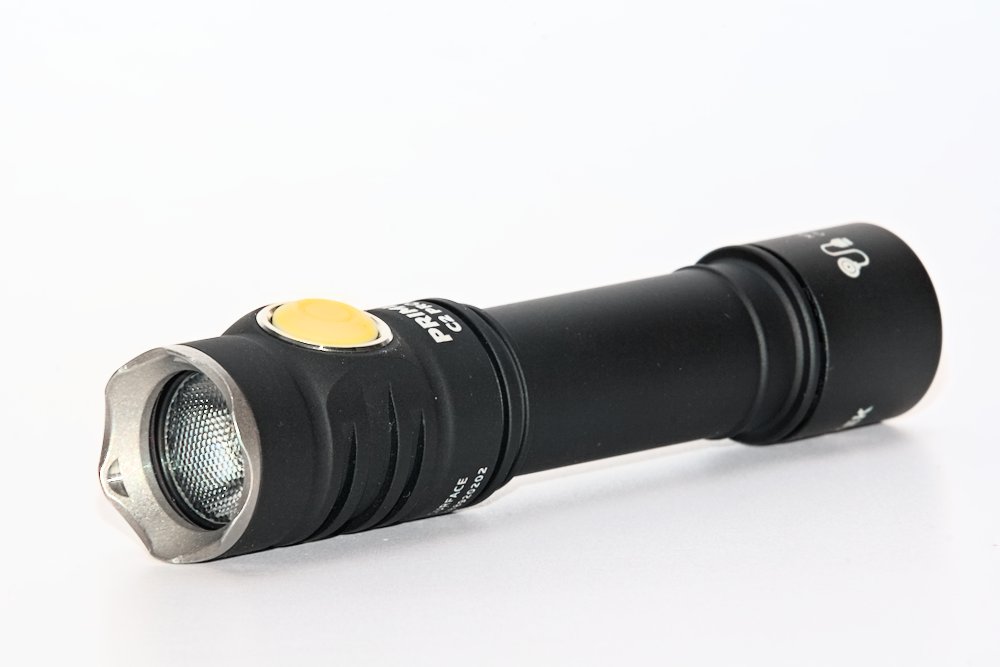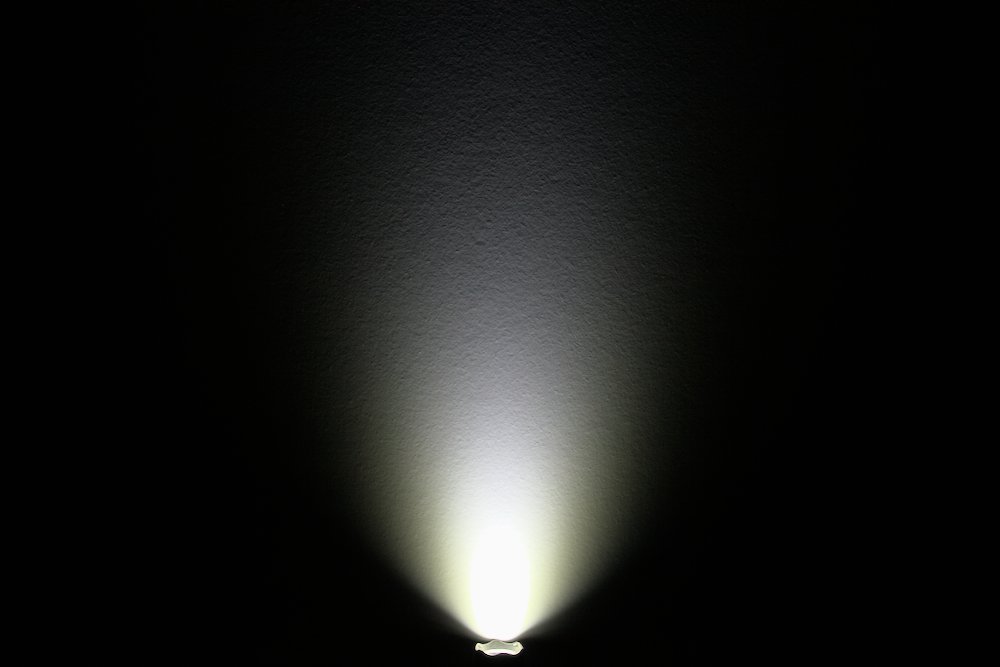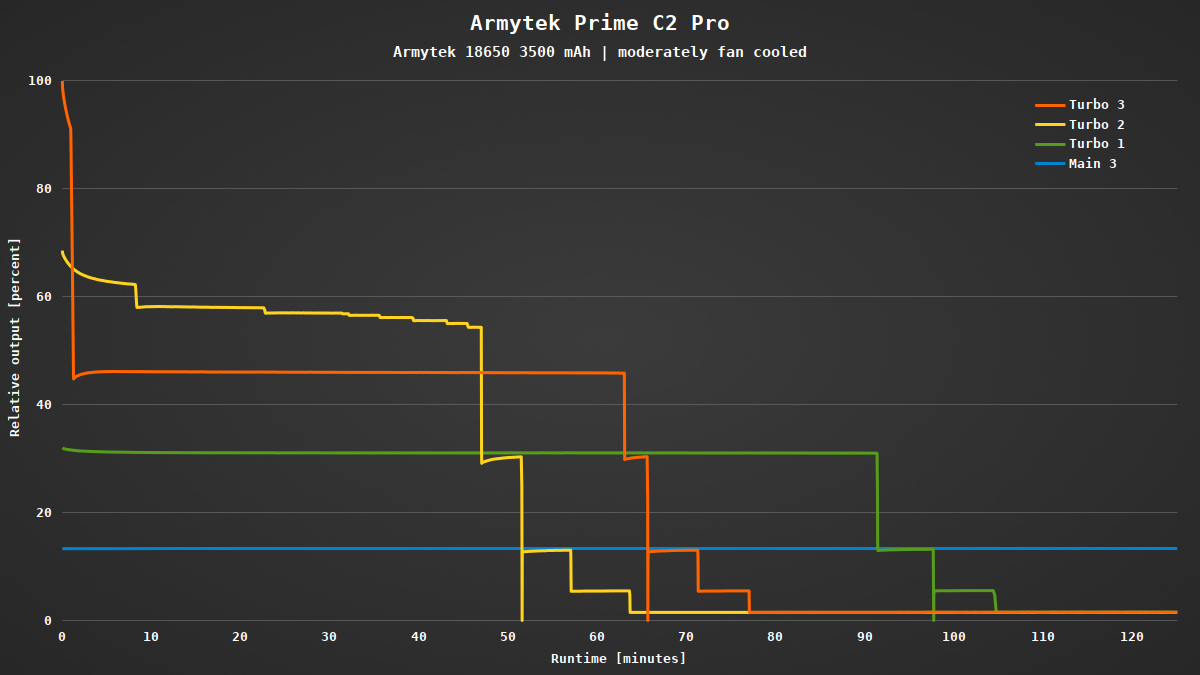Not long ago – actually just ten days ago – I reviewed the Armytek Wizard C2 Pro Nichia. What I didn’t tell you: I’ve also got a Prime C2 Pro as a companion for the Wizard from Armytek! Now it’s time to review this little pocket flooder.
As both lights are very similar (except for the obvious differences in their shape, of course), most of this text is just a copy of the Wizard review. So if you’ve read my Wizard review, you can skip the text and just enjoy the pictures. I will highlight differences with a red Prime.
This review is also available in German on my website: SammysHP Blog › Armytek Prime C2 Pro
Supplied parts and hardware
- 18650 Li-ion battery with 3500 mAh (3.54 V on delivery)
- Clip
- Holster Prime
- 2x replacement o-ring
- Magnetic charging cable
- Quick start guide (EN, DE, FR, RU, FI, SE, NO, PL)
The quick start guide contains a QR code that lets you download the full manual as a PDF. Saves paper and most functions are sufficiently explained in the quick start guide.
Simple design with matt black anodization. The textue allows a secure handling even without knurling, but makes it harder to clean. It’s almost like a chalkboard.
Prime
- Length: 118 mm
- Diameter: 20.5 – 24.5 mm
- Weight: 66 g / 115 g with battery
Perfect companion for the Armytek Wizard with a matching design!
Charging of the battery is possible using the magnetic charging port in the tailcap. Good solution to protect against water and dirt, but it requires the special charging adapter.
First you have to unscrew the tailcap slightly. Then it’s enough to move the light near the charging adapter and it will snap in place. Perfect! There are two status LEDs in the adapter:
|
Color |
Status |
|---|---|
|
green |
Standby / charging finished |
|
red flashing |
Loosen tailcap |
|
orange flashing |
Voltage too low or dirty contacts |
|
red |
Charging (1 A) |
|
orange |
Charging with reduced power (0.5 A) |
The magnetic tailcap can also be used for attaching the light. The magnet is strong enough to hold the flashlight horizontal safely. There’s no risk for a short: The center contact is recessed, with tightened tailcap both contacts have the same potential and with loosened tailcap there’s also no current.
The tailcap is sealed with two o-rings against water. The flashlight is rated as IPX8 (10 m deep). Both sides have strong springs to guarantee a good contact with the battery.
Prime The included holster allows you to carry the Prime on your belt or backpack. It has a small D-ring and a fixed loop for attachment.
Prime There’s also a clip, but Armytek sent me an older batch with a tiny clip that is different from the one shown in official product pictures. As it was mostly useless for me, I didn’t review it any further.
There’s no hole to attach a lanyard, but you can knot a piece of paracord to the battery tube if you like.
The matt anodization appears to be very sensitive and easy to scratch. Here you can see the marks after the first usage of the clip. But any light will show wear after some time, so it’s not a big issue for me. The head is glued and the electronics are fully potted. Armytek advertises that it will survive drops of 10 m height.
User interface and features
The prominent and colorful part of the flashlight is the electronic switch at the side of the head. It is used to control all functions.
You have the choice between two UIs. In the “general UI” some levels and features like strobe are omitted.
|
State |
Action |
Function |
|---|---|---|
|
Off |
1C |
Turn on (previous mode) |
|
Off |
1H |
|
|
On |
1C |
Turn off |
|
On |
2C |
Turbo (last used turbo in advanced UI) |
|
On |
1H |
|
All features are available in the “advanced UI”. To switch between both UIs, slightly unscrew the tailcap, keep the button pressed, tighten the tailcap and release the button.
|
State |
Action |
Function |
|---|---|---|
|
Off |
1C |
Turn on (previous mode) |
|
Off |
2C |
Turn on (main group) |
|
Off |
3C |
Turn on (turbo group) |
|
Off |
4C |
Turn on (strobe group) |
|
Off |
1H |
|
|
On |
1C |
Turn off |
|
On |
2C |
Switch between firefly and main group |
|
On |
3C |
Turbo group |
|
On |
4C |
Strobe group |
|
On |
1H |
|
The switch includes a backlight that shows the aproximate state of charge when the flashlight is on.
|
Voltage |
Color |
|---|---|
|
> 3.4 V |
green flashing (every five seconds) |
|
3.1 – 3.4 V |
orange flashing (every two seconds) |
|
2.8 – 3.1 V |
red flashing (every second) |
|
2.65 – 2.8 V |
Firefly without switch LED |
|
< 2.65 V |
Flashlight turns off |
When the temperature rises from high power, the switch indicated the temperature.
|
Color |
Temperature |
|---|---|
|
3x orange flashes (every two seconds) |
Warning, flashlight gets warm |
|
3x red flashes (every second) |
Too hot, output will be reduced |
You can configure the switch backlight to blink every five seconds when the flashlight is off. To change the setting, slightly unscrew the tailcap, hold the button pressed, tighten and loosen the tailcap, then release the button.
While it switch is pressed, it lights up red. Feedback in addition to the loud and solid click. The switch is easy to find because of it’s exposed location. It’s also protruding some millimeters, so be careful while carrying it in your pocket. Mechanical lockout is possible.
I like the intuitive UI. No gimmicks, but instead basic features that are arranged in a reasonable fashion. The switch is easy to find, but you should use mechanical lockout if you carry the flashlight in your pocket.
Illumination
Prime You can get the Prime C2 Pro in a cool white and a warm white variant. Both use a Cree XHP50.2 LED with lots of power, but mediocre color rendition. For my test I had the cool white version.
XHP50 tend to produce a magenta-green tint shift. But the Prime has a pebbled TIR (protected by a green AR coated glass lens) and creates a very floody and even beam. For a flashlight that you hold in the hand it’s almost too floody for my taste. The Prime is design for close-up range, but creates a nice, even light in that area.
Driver and runtime
For the price you can expect a good driver. The Prime uses a boost driver that is able to keep the output mostly independent of the battery voltage and provides a good efficiency.
|
Mode |
Brightness (from manufacturer) |
Runtime (from manufacturer) |
Current (measured) |
|---|---|---|---|
|
Turbo 3 |
2400/610 lm |
30 s + 2:48 h |
7.2 A |
|
Turbo 2 |
1710/610 lm |
1:30 min + 2:47 h |
3.8 A |
|
Turbo 1 |
815/610 lm |
22 min + 2:22 h |
1.5 A |
|
Main 3 |
350 lm |
5:20 h |
0.54 A |
|
Main 2 |
150 lm |
12:30 h |
0.22 A |
|
Main 1 |
40 lm |
40:30 h |
0.07 A |
|
Firefly 3 |
5 lm |
12 d |
––– |
|
Firefly 2 |
1 lm |
40 d |
––– |
|
Firefly 1 |
0.15 lm |
200 d |
––– |
|
Off |
––– |
––– |
7 µA |
I’m not able to measure the absolute brightness, but because of the very floody beam it feels different than throwy flashlights anyway. While my runtime measurement of the Main 3 mode mostly matches the advertised runtime, it’s far off for the turbo levels. I think this is caused by the cooling in my tests. The output will be reduced when the flashlight reaches about 55 °C. Because of the cooling the flashlight kept its output higher for a longer time, which shortened the runtime.
After all tests it was still running at a low firefly level and the battery was at about 2.85 V. So still hours of firefly left.
There’s no PWM, but some levels have very minor ripple. Not visible at all.
Even with the blinking locator switch the flashlight consumes almost no power while it’s off. Here’s a measurement with an oscilloscope:
Charging runs at either 1 A or 0.5 A depending on the power source. But I noticed that it’s not the usual CC/CV method. Instead the charger starts pulsing at some point. While there are some pulsed charging methods for li-ion batteries, usually they run at several Hz. The Armytek charger turns the output off for some seconds every minute or so. After 3.5 h the battery is fully charged to 4.17 V. Not sure how this charging method affects the battery life.
Btw, the magnetic charging in the tailcap doesn’t contain any magic. The center contact is connected to the negative pole of the battery, the outside with the host. When the tailcap is tightened, the battery tube presses against the tailcap PCB and both contacts have the same potential. When it is loosened, the connection is broken and the body becomes the positive pole for charging.
Conclusion
Prime A small, powerful pocket flooder with simple user interface. Don’t expect any throw, but you’ll get a very nice even illumination. If you already have an Armytek flashlight, this will be the ideal compagnon with a matching design and compatible magnetic charging system.
The anodization might wear quickly. Also the charging method might wear the battery faster than necessary. Too bad Armytek doesn’t have a Nichia variant like the Wizard.
Currently you can get the Armytek Prime C2 Pro in the official Armytek shop with 15% discount by using the code SAMMYSHP15. I’m not sure if it will work in all international stores, just try it out.




















